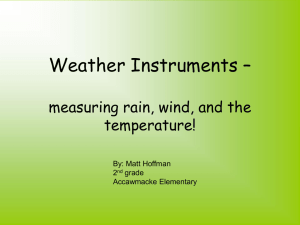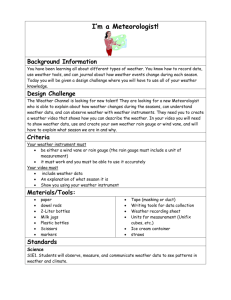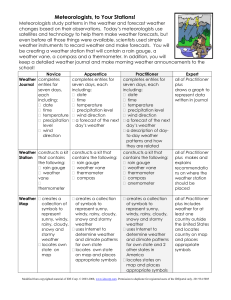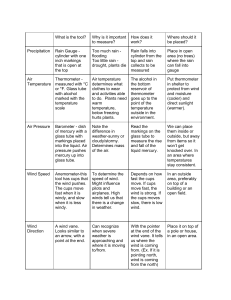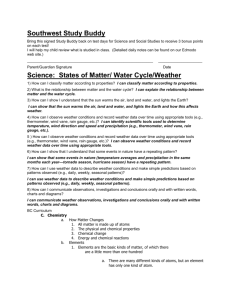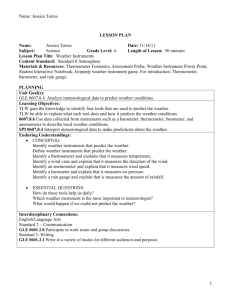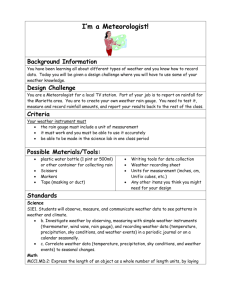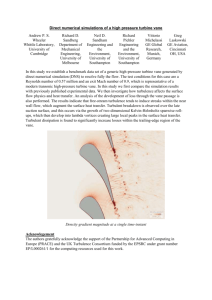Fall
advertisement
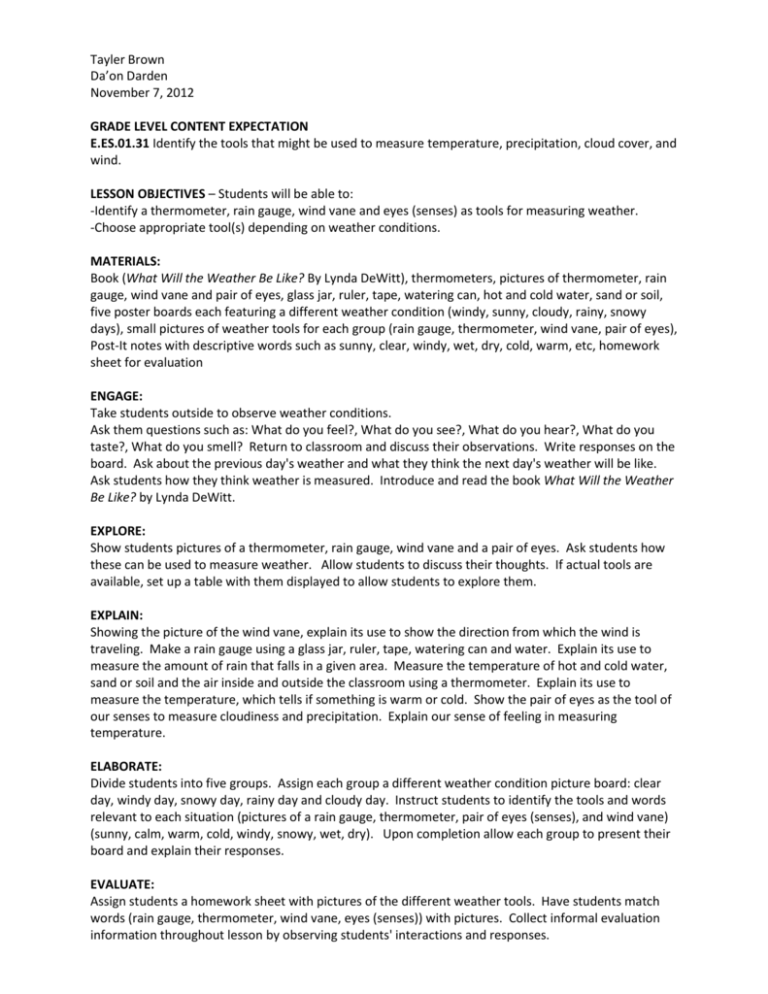
Tayler Brown Da’on Darden November 7, 2012 GRADE LEVEL CONTENT EXPECTATION E.ES.01.31 Identify the tools that might be used to measure temperature, precipitation, cloud cover, and wind. LESSON OBJECTIVES – Students will be able to: -Identify a thermometer, rain gauge, wind vane and eyes (senses) as tools for measuring weather. -Choose appropriate tool(s) depending on weather conditions. MATERIALS: Book (What Will the Weather Be Like? By Lynda DeWitt), thermometers, pictures of thermometer, rain gauge, wind vane and pair of eyes, glass jar, ruler, tape, watering can, hot and cold water, sand or soil, five poster boards each featuring a different weather condition (windy, sunny, cloudy, rainy, snowy days), small pictures of weather tools for each group (rain gauge, thermometer, wind vane, pair of eyes), Post-It notes with descriptive words such as sunny, clear, windy, wet, dry, cold, warm, etc, homework sheet for evaluation ENGAGE: Take students outside to observe weather conditions. Ask them questions such as: What do you feel?, What do you see?, What do you hear?, What do you taste?, What do you smell? Return to classroom and discuss their observations. Write responses on the board. Ask about the previous day's weather and what they think the next day's weather will be like. Ask students how they think weather is measured. Introduce and read the book What Will the Weather Be Like? by Lynda DeWitt. EXPLORE: Show students pictures of a thermometer, rain gauge, wind vane and a pair of eyes. Ask students how these can be used to measure weather. Allow students to discuss their thoughts. If actual tools are available, set up a table with them displayed to allow students to explore them. EXPLAIN: Showing the picture of the wind vane, explain its use to show the direction from which the wind is traveling. Make a rain gauge using a glass jar, ruler, tape, watering can and water. Explain its use to measure the amount of rain that falls in a given area. Measure the temperature of hot and cold water, sand or soil and the air inside and outside the classroom using a thermometer. Explain its use to measure the temperature, which tells if something is warm or cold. Show the pair of eyes as the tool of our senses to measure cloudiness and precipitation. Explain our sense of feeling in measuring temperature. ELABORATE: Divide students into five groups. Assign each group a different weather condition picture board: clear day, windy day, snowy day, rainy day and cloudy day. Instruct students to identify the tools and words relevant to each situation (pictures of a rain gauge, thermometer, pair of eyes (senses), and wind vane) (sunny, calm, warm, cold, windy, snowy, wet, dry). Upon completion allow each group to present their board and explain their responses. EVALUATE: Assign students a homework sheet with pictures of the different weather tools. Have students match words (rain gauge, thermometer, wind vane, eyes (senses)) with pictures. Collect informal evaluation information throughout lesson by observing students' interactions and responses.
